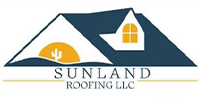A leaky roof can send shivers down any homeowner’s spine. But before you panic about the cost of repairs, consider this: your homeowner’s insurance might have you covered! However, understanding what kind of roof damage qualifies for insurance reimbursement is crucial.
Acts of Nature Take Center Stage
Imagine a powerful storm ripping through your neighborhood, leaving a trail of destruction in its wake. If your roof falls victim to these events, you’re more likely to get insurance coverage. Here are some common culprits:
- Wind and Hail: High winds can tear off shingles, while hail can cause punctures and cracks. These sudden and destructive events are typically covered by most policies.
- Falling Objects: A hefty tree branch crashing onto your roof during a storm? Insurance might help with repairs for this type of damage caused by an external event.
- Weight of Ice and Snow: Heavy snow accumulation can put immense stress on your roof, causing structural damage or collapse. Depending on your policy, this could be covered.
Fire and Smoke Damage
A fire, even a small one, can wreak havoc on your roof. The direct heat and flames can cause significant damage, while smoke and soot infiltration can necessitate additional repairs. Thankfully, most homeowner’s insurance offers coverage for fire-related roof damage.
Beware the Exclusions: Wear and Tear vs. Sudden Events
Insurance isn’t a magic solution for all roof woes. Here’s what typically won’t be covered:
- Normal wear and tear: As your roof ages, shingles will naturally deteriorate and need replacement. This is considered routine maintenance and falls outside the scope of insurance coverage.
- Poor maintenance: If your roof leaks due to clogged gutters or neglected repairs, the damage likely won’t be covered. Proper maintenance is your responsibility as a homeowner.
- Gradual Leaks: Slow leaks caused by missing or damaged flashing, for example, are seen as a gradual deterioration and typically not covered.
- Flood Damage: Most homeowner’s policies exclude flood damage, so a leaky roof caused by overflowing rivers or storms wouldn’t be covered.
Remember, It’s Always Best to Check Your Policy
Every homeowner’s insurance policy is unique. While the scenarios above provide a general guideline, it’s crucial to consult your specific policy documents to understand what type of roof damage your insurance covers. Don’t hesitate to contact your insurance agent if you have any questions or uncertainties.
By understanding your coverage and taking proactive measures to maintain your roof, you can face a leaky situation with more confidence, knowing your insurance might be there to back you up.
